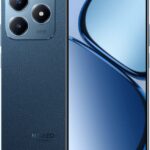Google is testing an Auto Dark Mode feature for websites on its iPhone app, according to a report. As the name suggests, the feature automatically turns on dark mode on applicable websites, the report suggests. Similar to a browser, the Google app allows users to browse the web. In addition, it also has artificial intelligence (AI) capabilities through Gemini, the company’s proprietary conversational AI chatbot. This new feature is reportedly currently in testing phase and is not widely available to users.
Auto dark mode on iPhone
According to a report by 9to5Google, Auto Dark Mode on iPhone has become available through Google Search Labs – a program that allows users to try out experimental features that are not yet available to the public.
In introducing the feature, Google reportedly said, “Stay in dark mode no matter what website you’re on. Turn on dark mode on your device to activate this experience so that all websites you visit match your app’s dark theme.”
When enabled, this feature will be turned on for all applicable websites, as detailed below. It has also been announced that Auto Dark Mode will not be available on websites that have an existing dark mode. In the screenshots shared by 9to5Google, Auto Dark Mode introduced a new look to the website, but it didn’t appear to represent a pure black look. Instead, the background became dark gray.
Since the feature is currently only available to early testers as a beta experiment, Google reportedly says, “Dark mode conversion quality may vary. The experiment does not apply to websites with an existing dark theme.”
Minimized custom tabs in Chrome
Apart from experimenting with the Auto Dark Mode feature in the Google app, the tech giant has also introduced a new feature called Minimized Custom Tabs on its Chrome browser for Android. Available with Chrome version 124, it turns tabs into small floating windows when minimized.
This feature appears as a drop-down button on the top banner next to the website name. At the touch of a button, the tab turns into a floating picture-in-picture (PiP) window.


